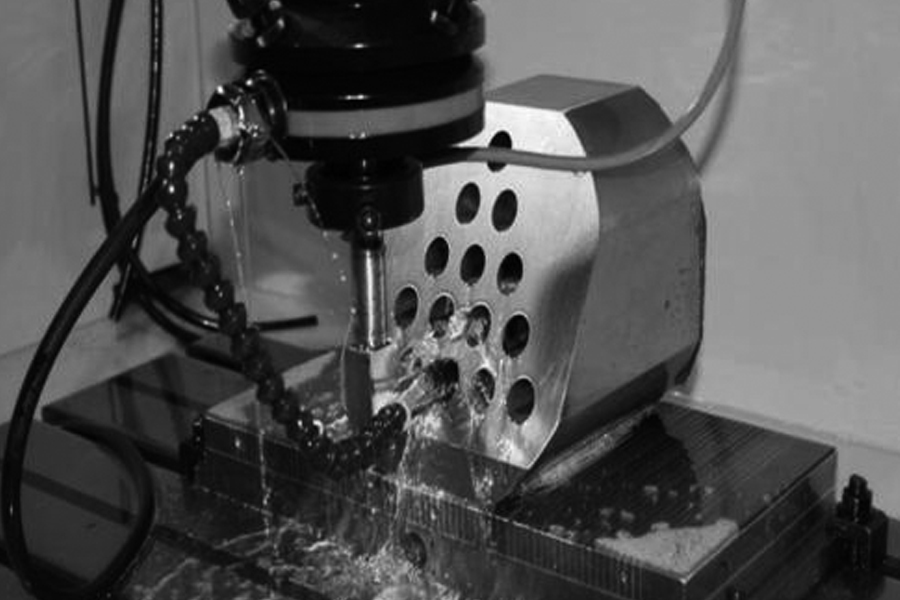The automatic tool change system in the machining center is composed of a tool magazine and an automatic tool change device. There are two major advantages of having an automatic tool change system: one is to keep only one spindle in the spindle box, which is beneficial to simplify the spindle structure and improve the rigidity of the spindle; second is to store a large number of tools with different types and functions in the library, easy Complete various complex and multi-step processing procedures. Therefore, whether there is an automatic tool change system is an important sign to distinguish between CNC machine tools and machining centers.
The automatic tool changer in the automatic tool change system is mainly divided into three types: direct tool change, manipulator tool change and turret head:
(1) Manipulator tool changing method
Manipulator tool change method refers to that the manipulator operates the tool during tool change, is responsible for transferring the tool between the tool magazine and the spindle, pushing the tool to be used to the spindle, and then returning the replaced tool to the tool magazine. Although this tool change method is not as direct as the previous one, it avoids the tool magazine and spindle moving for tool change, but is replaced by a robot. In this way, the movement range of the mechanical components is reduced, the speed of completing the tool change is faster, and the design layout is more flexible, so it is widely used in most CNC machining centers.
If each tool is switched with its own independent manipulator, it is called a special tool-changing manipulator method; on the contrary, multiple tools are switched using a common manipulator, which is called a common tool-changing manipulator method. The latter has three types of indexable tool change manipulator, two-handed tool change manipulator and tool transfer manipulator.
(2) Direct tool change
Direct tool change means that the tool change process is completed by the tool magazine and the spindle box. This is the most direct tool change method.
Is distinguished according to whether the tool magazine is displaced during the tool change process. The direct tool change method can be divided into two types: tool magazine shifting method and tool magazine fixing method. In the tool magazine shift mode, the tool magazine can be moved. Before the tool change, the tool magazine enters the tool change work area, and then exits the area after the tool change. In this tool change mode, due to more movement in the tool magazine, the layout is more particular, and the flexibility and adaptability are poor.
In the tool magazine fixing method, the tool selection is mainly performed by the movement of the spindle box. The tool magazine can remain stationary, or it can only rotate position. The former can only perform sequential tool selection, which is suitable for machining centers with a small number of tools, while the latter can realize index selection. This tool selection method reduces the movement of the tool magazine, can greatly simplify the design structure of the tool magazine, and the control of the tool change process is simple and reliable.
(3) Turret head method
Turn tower head method is to change the tool by moving the required tool to the corresponding position through the rotation of the brick tower. It is generally a sequential tool change, which has the advantages of compact structure and extremely short tool change time. It is generally used for processing parts such as crankshafts and other slender workpieces that need to complete multiple processes.
Automatic tool changer with turret head is divided into turret tool holder tool change and brick tower spindle head tool change. The turret tool holder tool change method is to install a ring-mounted tool holder on the turret main shaft. Different tools are arranged on the tool holder in sequence. Through the rotation of the turret head, automatic tool change is realized. The position of the tool depends on the rotation of the tool holder Indexing to locate. This is the simplest automatic tool changer. It has good rigidity in structure and can withstand the cutting force of rough machining. This device has high requirements on the positioning accuracy of the tool holder rotation. If the rotation positioning accuracy is in error, the tool cannot be sent to the accurate position.
The turret spindle head tool change method also needs to be equipped with a turret, but the turret spindle is not connected to the tool holder, but a plurality of different orientations, divided into octopus tentacle-shaped sub-spindle heads, each spindle head is installed in advance Tools required for the process. In operation, by rotating the turret, each spindle head rotates to the machining position in sequence according to the program instructions, thereby realizing automatic tool change. In this tool change method, since each sub-spindle is concentrated on a turret, the rigidity of the turret spindle is relatively high, and the number of tool spindles is also limited. The turret spindle head tool change method is mainly used in small vertical machining centers.
